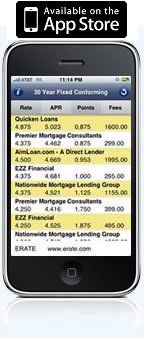Automobile Financing
Chances are, your next car will be used. Drive a hard bargain
(03/23/2010) One in three American's will drive their current car until it's a heap and then buy a used car -- potentially a financially sound choice.
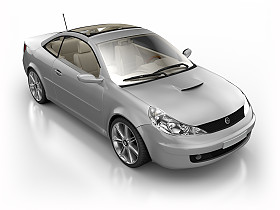
The economy and concerns about problems with America's most popular new cars top the list of consumers considerations when it comes to buying their next car.
In addition to the 30 percent who plan on their next car being used, another 7 percent are ready to buy now -- also used.
New and Used Auto Loan Rates
Choose Your State Below
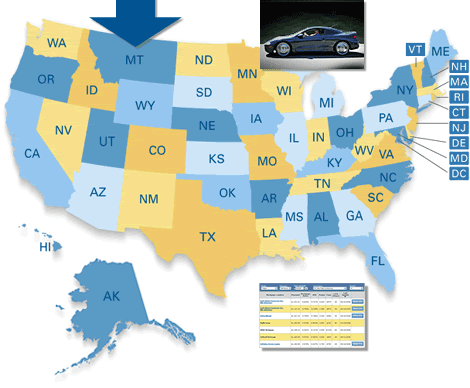
Start by selecting your state
Others considering buying new vehicles are heavy into research to save money or they are looking for a vehicle with fewer options, again, both to save money.
If, however, you buy a pre-owned vehicle without careful considerations and close inspections of the vehicle, the cost you seek to save could drive you into the ground.
Ipsos Public Affairs, commissioned by CarMax.com, recently conducted a telephone survey of more than 1,000 adults.
The survey asked "As the weather and economy both show possible signs of thawing, which of the following statements best describes your attitude towards shopping for your next car?"
The responses were:
• I'll wait until my car doesn't run anymore, then I'll buy used - 30 percent (By 34 percent to 26 percent, women were more likely than men to say they plan to buy a used car when their current car stops running.).
• I bought a (new or used) car this past year, despite the recession - 18 percent.
• It's still too early, I'm nervous about spending that kind of money - 13 percent.
• I am ready for a new car but I will buy used to be smart - 7 percent.
• I'm doing my research online to find the right car to purchase - 7 percent.
• I'm looking for something with fewer bells and whistles to keep the cost low - 2 percent.
A solid used car can be a better deal than a new one just by virtue of the smaller initial cost, smaller monthly payment and, when financed, the smaller financing costs.
Occasional repairs with a monthly payment can also be cheaper than a new car payment, over the course of a year. What's more, insurance and taxes are cheaper, and a recently owned used vehicle has already taken its biggest hit in depreciation, says Consumer Reports.
That initially assumes, however, that the used car is sound and in tip top shape and priced right for its age.
How to shop for a used car
• Check the Kelley Blue Book to research car prices based on age and condition and other factors.
Consumer Reports offers reliability records to help you choose used cars that hold value and the road.
The independent, non-profit rater of consumer goods and services offers additional advice on avoiding a lemon.
• Check for recalls and Technical Service Bulletins (TSBs) with the The National Highway Traffic Safety Administration. Also ask the seller for documentation on any recall service. Automakers are required to perform recall services free of charge, regardless of the vehicle's age or how long ago the recall was issued. TSBs typically aren't safety related and repairs are at the discretion of the automaker, but they can be a negotiating point.
• Check the vehicle's history. A vehicle-history report from Consumer Report's affiliate CarFax or Experian Automotive can alert you to possible odometer fraud; reveal past fire, flood, and accident damage; or tell you if a rebuilt or salvage title has ever been issued for the vehicle.
• Check the window sticker. Federal law mandates a Buyer's Guide in every used vehicle for sale from a dealer. It says if the vehicle is being sold "as is" or with a warranty with terms that must be backed by the dealer. "As is" is "as is" does. There's no guarantee on the condition of the vehicle. Have a mechanic give "as-is" vehicles the once over before buying.
• Check the exterior. Look for dents, chipped paint, mismatched body parts, body parts out of line and other signs of collision and repair. Likewise doors, hoods, or trunks that don't close properly indicate previous damage and/or sloppy body work.
• Check the interior. Look for cracked dashboards, missing knobs, handles, and buttons. Frayed seat belts or ones with melted fibers (because of friction) may be evidence of a previous frontal impact above 15 mph. Prematurely worn pedals or a sagging driver's seat are signs that the vehicle has very high mileage. A mildew smell, discolored carpeting, silt in the trunk, or intermittent electrical problems may be signs of flood damage.
• Check under the hood. Look for a relatively grease-free engine, radiator, and battery with little or no corrosion. Tight but pliable and unworn belts and hoses are also good signs. Wet spots, melted wires, tubes, or lines, or a blackened firewall indicate trouble. Check the fluids to insure they are clean, filled properly and don't leak. Check the oil when the engine is cool. Check the transmission fluid after 10 minutes of driving.
• Check elsewhere. Other tell tale signs to seek include even wear across the width of the tires' tread; no slack or play in the steering; a quick rebounding suspension that doesn't bounce around after pushing down on each fender; tail pipe smoke that's black, blue or billowing white; excessive engine revving before the car accelerates; and knocks and pings while accelerating.
• Check in with a mechanic. It's best to seal the deal on any used car only after it's been examined by a qualified mechanic who routinely does automotive diagnostic work. Consumer Reports says expect to pay about $120. An organization called the Car Care Council certifies diagnostic shops. For members, the American Automobile Association (AAA) also offers recommended facilities.
Other related articles:
Automotive Loans: Trading in a Car
Automotive Loans: Car Buying Incentives
Automotive Loans: How Much Car Can You Afford?
Five Ways to Make Your Tax Refund Work for You
Cost of Owning a Car on the Rise, Find Low Rate Auto Loan Online
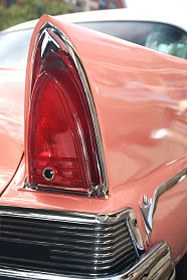
Automotive Loans: Trading in a Car
Automotive Loans: What Laws Protect Car Buyers?
Automotive Loans: Trade In or Sell a Car?
Automotive Loans: Is Zero Percent Financing Really Possible?
Automotive Loans: Determining a Down Payment
Automotive Loans: The Truth About "Add-Ons"
Automotive Loans: Top 5 Mistakes When Buying a Car
Automotive Loans: Shopping Online
Automotive Loans: Dealer Incentives to Buy
Automotive Loans: Car Buying Incentives
Automotive Loans: Should You Buy New or Used?
Automotive Loans: What to Know About Interest Rates
Automotive Loans: Negotiating a Loan with a Dealer
Automotive Loans: How Much Car Can You Afford?
Automotive Loans: Understanding Typical Loan Language
Automotive Loans: Types of Financing
Automotive Loans: Buying Vs Leasing
Automotive Loans: Applying for a Car Loan
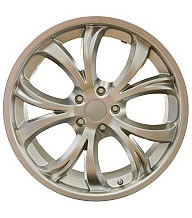
Buying a Car: Standard and Extended Warranties
Car Buying: Financing Background and Steps
Leasing a Car: Two Types of Leases - Closed & Open
Buying a Used Car: Two Options
Buying a Car: 5 Steps to Find the Perfect Deal
Automobile Buying/Financing

5 Steps to Find the Perfect Car
Auto loan defaults to rise 7 percent in 2010
Auto Show Season Tips for Buyers
When is the Best Time to Buy a New Car?
Making a Vehicle Purchase? Enjoy These Helpful Tips
Chances are, your next car will be used. Drive a hard bargain
What your car is really saying
2012 President's Day auto sales among best ever
Special Report: Hitting the Brakes on Auto Dealer Loans
Auto Insurance
Buying Ins - Shopping for Insurance
Best Car Insurance Plan for You

